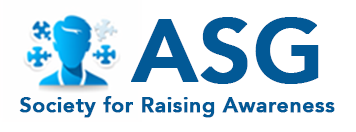Autism is a Spectrum Disorder (ASD) beginning in childhood and typically involving challenges in communication, socialization, and rigid, inflexible patterns of behavior. (See Diagnosis Section). While having particular challenges, many individuals on the spectrum often have special talents that equal or even exceed those of other “neuro-typical” peers. While there is no cure for autism spectrum disorder, individuals on the spectrum are lifelong learners and benefit greatly from treatments involving Applied Behavior Analysis (ABA), visual supports, and functional communication training. Individuals on the spectrum typically respond well to highly structured, and predictable habilitative and educational programs designed to meet their individual needs and desires. It should be noted that persons with ASD can be affected by the same issues as their peers (e.g., anxiety, depression, seizure disorders, diabetes, and so on); diagnosis of these additional issues, while often more difficult due to communication challenges, is important in developing effective treatments. With individualized treatment, education, and support children and adults can learn to live and participate in their community.

Research has demonstrated that individuals with ASD benefit from early intervention and appropriate interventions throughout the lifespan. Applied Behavior Analysis (ABA) is an empirically-based best practice that is available from appropriately trained behavior analysts. ABA has often been misinterpreted historically. It is a robust empirical approach to the study of human behavior, most often involving the identification of the functional properties of behaviors, strengthening desired behaviors through reinforcement and environmental manipulation, and weakening undesired behaviors through the strengthening of appropriate replacement behaviors. It is quite effective, not only in treating behavioral issues but also in identifying and teaching effective skills. Other treatments that have been demonstrated to be effective are functional communication training, structured teaching, and speech therapy. There is recent research by the Frank Porter Graham Child Development Institute in conjunction with the National Professional Development Center on ASD that identified 27 Evidence-Based Practices; of these, 13 are traditional behavior analytic techniques, 8 are naturalistic behavioral techniques, and the remaining 6 are from other theoretical influences.
As most of us in the field of ASD know only too well, there are many practices that are promoted as “wonder-treatments” and unfortunately many of these claims are not based on solid evidence. Making decisions on which treatment would best serve the needs of your loved one or for your clients, it is important to know which ones have been clearly and empirically shown to be effective. Evidence-Based Practices (EBPs) are those interventions that researchers have shown to be safe and effective, based on clear scientific research. Efficacy, according to the National Professional Development Center (NPDC) on ASD, must be established through peer-reviewed research in scientific journals using accepted high standard methodologies.
As each person responds to treatment differently, we cannot endorse any one treatment or program. Families should educate themselves about all options and choose what they feel is in the best interest of their child and family, based on their experience and what resources are available.
This section provides an overview of many available approaches, not specific treatment recommendations. Keep in mind that the word “treatment” is used in a very limited sense. While typically used for children under age three, the approaches described here can be included in an educational program for older children as well.
Treatments can divided into nonmedical interventions, which include behavioral and educational approaches as well as sensory, communication and other therapies, and biomedical treatments, such as diet modifications, addition of vitamins and minerals, gut treatments, immune system regulations and others.
It is important to match a child’s potential and specific needs with treatments or strategies that are likely to help him/her reach established goals and greatest potential. The Autism Society does not want to give the impression that parents or professionals will select just one treatment from a list. A search for appropriate treatment must be paired with the knowledge that all treatment approaches are not equal – what works for one will not work for all. The basis for a treatment plan should come from a thorough evaluation of the child’s strengths and weaknesses.
